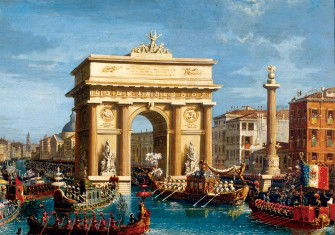The Wreck of the Vrouw Maria
On 9 October 1771 masterpieces of Dutch art destined for Catherine the Great sank with the Vrouw Maria off the coast of Finland.

When the connoisseur Gerrit Braamcamp died in 1771 the auction of his collection was one of Amsterdam’s events of the year. Some 20,000 people saw it; 2,000 copies of the catalogue were sold.
The two most valuable paintings – a triptych by Gerard Dou known as The Nursery and Large Drove of Oxen by Paulus Potter – were bought by agents of Catherine the Great, along with ten other masterpieces. Dou’s triptych, in particular, was considered one of the greatest works of the Dutch Golden Age, on a par with Rembrandt’s Nightwatch.
Catherine would never see her acquisitions, however. The works were loaded on to the Vrouw Maria, which sailed for St Petersburg on 5 September. The bulk of the cargo was sugar, but there was much else besides: madder and brazilwood, herring and cheese, clay pipes and silver.
But on 3 October the ship foundered in a storm in the Finnish archipelago. The crew survived and spent six days frantically salvaging what cargo they could, but the Vrouw Maria sank with its art treasures still packed tight in its upper hold. They were still there when the wreck was discovered in June 1999 in 40-odd metres of water. The ship is almost perfectly preserved. Its art? Perhaps it is better not to know.






